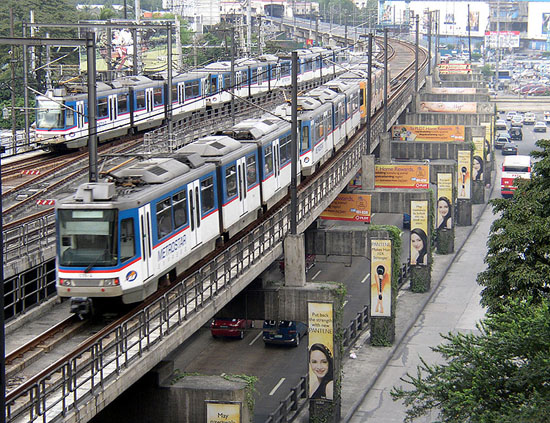
MANILA — Stressing the need to address the safety of the Metro Rail Transit (MRT), a group of private companies that own the MRT has proposed immediate complete rehabilitation plan amounting to US$ 98-million or roughly Php4.4 billion at no cost to government.
”It entails raising approximately US$ 98 million from private sector to do the entire rehab that can be accomplished in substantial time of about 18 months,” said Roberto Sobrepeña, the former chairman of MRT Corp. (MRTC), in media interview at the sidelines of Senate inquiry into the status of MRT 3.
Sobrepena told the Senate panel that the MRT has deteriorated fast since its maintenance was taken from its original maintenance provider, Sumitomo Mitsubishi, two years ago.
”Repairs should be immediate. Third quarter next year might be too long to wait,” he said.
Sobprepena, chairman of Fil-Estate, is confident that private sector can immediately put their proposal into action and complete rehabilitation in a fastest and soonest time possible.
”We’re so passionate because we feel it (proposal) should bring back MRT to its original condition. Our priority is to fix it and take away the danger and long queues and bring the convenience to the riding public and make MRT 3 safer in general for the public,” he said.
”None of our estimated budget will be coming from the government. This will be raised by the private sector to be used basically for rehab and overhaul of the system,” Sobrepena added.
He said the complete rehabilitation will increase the MRT fare but “it will never be higher than the bus fare.”
Sobrepena said the buyout proposal of the government is a waste of time and money of the government.
”Not a single peso of that buyout will go to rehab or fixing of the system, then that is the waste. For us, the focus should fixing the system, rehabilitating it and bring it back to its original shape,” he stressed.
Department of Transportation and Communication (DoTC) undersecretary Jose Lotilla said they will study the private sector’s proposal.
”I guess we’ll really have to see it, to check on what is really there. I don’t want to be skeptic but as they say, show me the money,” Lotilla said when asked by media for his reaction.
Senator Grace Poe, who chaired the Senate hearing, emphasized that the safety of thousands of commuters must not be left to “sheer luck,” with the pressing need to rehabilitate the MRT system.
“We should not rest on our luck. It is clear that in 2010, the rails should have been replaced already,” Poe said during the three-hour Senate public services subcommittee on transport hearing.
“I don’t want to scare our passengers but we must do all we can to expedite the process,” Poe pushed.
Amid the urgency, Poe said the government should not get the short end of the deal.
The senator asked transport officials to submit the status of bidding and timelines for the MRT’s maintenance requirements, as well as the bidding for the rails if separate from the maintenance providers.
During the hearing, Poe presented a report card for the MRT, wherein commuters gave dismal ratings to different stations. It was based on six criteria: queue, ease of travel, elevators/escalators, airconditioning, comfort rooms, and total riding experience.
The photos of MRT facilities including the restrooms which were also presented at the hearing bared the squalid conditions of the train system in the light of numerous complaints and technical glitches hounding commuters.
Poe pressed transport officials and stakeholders at the hearing to lose no time to discuss solutions to the MRT challenges that imperil commuters’ safety.